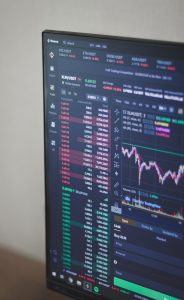Forex trading is all about predicting the future movements of currency pairs. One of the biggest challenges for traders is to identify when a trend is about to change. A trend change can be a profitable opportunity for experienced traders, but it can also be a trap for those who are not able to spot the change in time. In this article, we will discuss some of the methods that traders can use to identify trend changes in forex.
What is a trend in forex trading?
To understand how to identify trend changes in forex, it is important to first understand what a trend is. A trend is a general direction in which the price of a currency pair is moving. It can be either up, down, or sideways. Forex traders use trends to make trading decisions, as they provide valuable information about the market sentiment and the balance of power between buyers and sellers.
Trends can be identified using different tools and indicators, such as moving averages, trend lines, and price action analysis. Once a trader identifies a trend, they can use it to make trading decisions, such as entering or exiting a trade, setting stop-loss orders, or taking profit.
How to identify a trend change in forex?
Identifying a trend change in forex requires careful observation and analysis of different factors that affect the market. Here are some of the methods that traders can use to identify a trend change:
1. Price action analysis
Price action analysis is a popular method used by forex traders to identify trend changes. It involves analyzing the price movements of a currency pair without using any indicators or other technical tools. Traders who use price action analysis look for patterns in the price movements, such as higher highs and higher lows in an uptrend, or lower highs and lower lows in a downtrend.
When a trend is about to change, price action traders look for signs of exhaustion, such as a series of lower highs and lower lows in an uptrend, or a series of higher highs and higher lows in a downtrend. They also look for candlestick patterns, such as doji or engulfing patterns, which can signal a potential trend reversal.
2. Moving averages
Moving averages are another tool that traders use to identify trend changes. A moving average is a line that represents the average price of a currency pair over a certain period of time. Traders use different types of moving averages, such as simple moving averages or exponential moving averages, to identify trends and potential trend changes.
When a moving average crosses over or under another moving average, it can signal a potential trend change. For example, when a shorter-term moving average crosses over a longer-term moving average, it can signal a potential uptrend, while a cross under can signal a potential downtrend.
3. Oscillators
Oscillators are technical indicators that measure the momentum and strength of a trend. They can also be used to identify potential trend changes. Popular oscillators used by forex traders include the Relative Strength Index (RSI), the Moving Average Convergence Divergence (MACD), and the Stochastic oscillator.
When an oscillator reaches extreme levels, it can signal a potential trend change. For example, when the RSI reaches overbought levels in an uptrend, it can signal a potential reversal, while oversold levels in a downtrend can signal a potential reversal.
4. Support and resistance levels
Support and resistance levels are areas on a chart where the price of a currency pair tends to stop or reverse. Traders use these levels to identify potential trend changes. When a currency pair breaks through a support or resistance level, it can signal a potential trend change.
For example, if a currency pair has been in an uptrend and it breaks through a support level, it can signal a potential downtrend. Similarly, if a currency pair has been in a downtrend and it breaks through a resistance level, it can signal a potential uptrend.
Conclusion
Identifying trend changes in forex is a crucial skill for traders who want to make profitable trading decisions. Traders can use different methods and tools, such as price action analysis, moving averages, oscillators, and support and resistance levels, to identify potential trend changes. By combining these methods and using sound risk management strategies, traders can increase their chances of success in the forex market.





